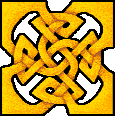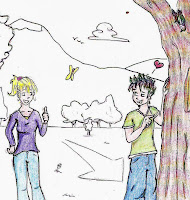 What is Nature Awareness?
What is Nature Awareness?
Nature Awareness, is “Learning with the Heart” (Cornell, 1989, p.12). It is known that Native Americans (The 1st Nation) and other 1st nation cultures use an awareness which is based on a belief that there is a power greater than ourselves and that we are not separate, but a integral part of nature, the American 1st nation calls this ‘The spirit that moves through all things’.
In essence it’s about our relationship with our self, our fellow wo/man and ultimately with the Creator (or a higher power) in nature. It provides an opportunity to look at the bigger picture both externally and internally, by connecting with our heart, we can then begin to explore our feelings, behaviours, relationships and learn to deal with these in an honouring and respectful way, by using our five scenes and connecting with our so-called sixth sense or our spiritual awareness.
One way this can be achieved is through a series of nature awareness exercises, where one teaching leads into another by asking a series of questions which are aimed at helping the participants to think for themselves, this is known as coyote teaching. Brown states, “A coyote teacher makes every learning experience exciting, something we desperately want to know.” (Brown, 1989, p.xi).
When children take part in Nature Awareness it is very powerful because they are the most aware of all. However according to Brown (1989) this awareness becomes dulled because of “our education system... pressures of society, parents and the state” (p.6) not forgetting celebrity status, as a result our youth are placed under immense pressure to succeed in life and to work for their future. The excitement and sense of adventure is all but gone through social restrictions of one kind or another, so our youth may seek adventure else were, rarely appearing to following their hearts.
Our youth not only appear to have lost a sense of self, but their sense of adventure can be seen on our streets were it might be expressed through anti-social behaviour supported by drugs and crime and were they come to believe that there are no real alternatives to life. And we can see this being played out on TV through news items and documentaries, our society and indirectly our politicians are now asking what can be done to change our adolescent’s anti-social behaviour.
During my workshops with adolescents the expression “Streetwise” (which is fear based) is used to help our youth see and understand that they already have the skills and senses necessary to engage in personal growth while in Nature (which is positive based) as a result they learn to channel their energy into a better understanding of themselves and others.
Brown (1999) states that “awareness goes beyond the physical... awareness is the doorway to spirit... the challenge is to step through the doorway” (p.10). In other words if we raise our level of awareness we become more self-empowered, seeing things in life that were previously ignored or we were just simply unaware of. This provides us with an opportunity for change, by being open and willing to change our thoughts and our old behaviours Nature Awareness helps us to remember what we already know as a result, participants may discover a new self.
In order to determine the effectiveness of Nature Awareness it is necessary to explore what wilderness therapy is, while the wilderness is a very important element of working with adolescents, addictions and other populations Nature Awareness can provide a bridge or “Halfway House” (Greenway, 1995, p.133) before and after the experience which does not necessarily require an extreme wilderness environment to “learn with the heart”.
It is widely considered that to engage and sustain in clinical intervention our marginalised youth are according to Raymond (2004) “…difficult cohorts” (p.3). In recent years our youth seem to be at greater risk due to various influences such as Russell (1989) “profound cultural change… unstructured home environments… an increase in single-parent families, and a media culture that bombards adolescents with images of sex, violence and excitement” (p.207). Not forgetting substance/alcohol abuse and more recently gambling and video gaming addictions.
Wilderness therapy can be defined as “an emerging intervention to help adolescents overcome emotional adjustment, addiction, and psychological problems.” (Russell, 1989, p.207). Others see it as “a therapeutic intervention that systematically applies an experiential learning methodology within the context of a natural environment.” (Raymond, 2004, p.1). It differs from other programmes because the wilderness is the primary facilitator for change and the therapeutic process is shared and facilitated by therapists. Which ever model is used in the therapeutic process it can be supported by primitive living skills, meditation and metaphor.
Nature Awareness can be taken into any environment, for example woodlands or garden. While the same principle of “the wilderness sets the boundaries” still applies it is a gentler environment. By experiencing the games, participants can begin to understand how they can have an active and productive roll in their own self-development. Nature Awareness is for all ages however, in the case of adolescents the wilderness along with Nature Awareness is perhaps the most powerful as it is a ‘classroom without walls’ which cannot be controlled or manipulated.
Raymond (2004) talks about some traits that adolescent’s display, which potentially could undermine treatment. “No self help-seeking behaviour…The need for autonomy and independence.” and “within the higher risk cohorts or marginalised groups (e.g., juvenile offenders), there are a number of additional characteristics that have the potential to undermine treatment”, these include. “No motivation towards intervention… Distrust of authority, poor concentration, hyperactivity and poor verbal, non-verbal and literacy skills and restlessness” (p.3). He continues by quoting (Kelly & Baer, 1971). It is “strongly suggested that the compatibility between marginalised youth and wilderness therapy is due to young people's high degree of energy, affiliation for risk taking and inclination towards action, as opposed to verbal-orientated programmes.”
According to Simpson (1991) most “adventure-based counsellors… generally follow Rohnke's (1984, 1989) attitude of “challenge by choice” (p.13). This attitude is embraced by Nature Awareness were participants can withdraw from an activity at any time. Implicit in this challenge by choice is that participants are given the necessary information to make an informed choice as to whether to continue or not. Nature Awareness is very much about the discovery of self while on a journey with nature, to disengage from an activity is a lesson in itself and is not seen as a negative. Nature Awareness compliments many treatment models and is supported by Simpson (1991) who says that trust in others and yourself is “…fostered through participation in adventure activities that parallel recovery concepts” (p.16).
The objective of Nature Awareness is to transfer lessons learnt into an opportunity for changing old behaviour and to be aware of self and of others, which previously the participant may have been unaware. It is believed that participants may learn lessons through experiencing activity’s which share elements of a concept which they can reflect upon, listen, discus or process with others who have shared a similar experience. By abstracting practical insights about themselves or others, and applying the lessons learnt to help change their behaviour.
Nature Awareness has many therapeutic elements to it, however one of the most important is Trust, several ways of achieving trust is 1) through the physical challenge of being blindfolded and 2) by being in nature and feeling supported by a group of like minded individuals, this presents an opportunity for an individual to buy into a process of establishing relationships and developing trust with their peers/therapist but ultimately with themselves in nature.
The journey unfolds, when adolescents are taken into what is perceived as an alien and perhaps high risk environment such as nature, the group process begins once safety and trust is established. Individuals learn to see their behaviour in an environment that they cannot control therefore surrender is required, often without any intervention from the therapist nature creates humility, a sense of peace and freedom in the individual, gratitude, and self-awareness can manifest in the individual were cognitive restructuring might be experienced.
Having claimed membership to a healthy community the adolescent has a vested interest in owning the programme they are engaged in. One critical element in the process of change is time adolescents are with their counsellors/peers, in a therapeutic residential/natural environment for the duration of their treatment process, resulting in an ongoing supportive relationship, which is based on trust, openness and honesty.
In recent times with the emergence of mindfulness (Third Wave Therapies) models like CBT are advancing therefore integration is even more possible now, for example Lau et al (2005) states “…recent innovations in psychological treatments have integrated mindfulness meditation techniques with traditional cognitive and behavioural therapies, challenging traditional cognitive and behavioural therapists to integrate” (p.863).
Nature Awareness promotes behavioural, cognitive and affective change and demonstrates an integrated approach which synergistically works with other therapies such as Cognitive Behavioural Techniques (CBT), Transactional Analysis (TA), Gestalt (GE), 12-Steps (STEPS) and Psychodrama (PD) which are used to deliver an end result GREATER than the use of a single therapy used in isolation, as an intervention Nature Awareness compliments the main stream models.

- Promotes confidence and self-esteem
- Improves communication
- Promotes working as a team, building relationship skills
- Builds trust
- In the here and now e.g. if the fire is not build participants may not get to eat
- Helps individuals to connect to a sense of wonder, puts things into perspective
- Encourages participants to take responsibility for their own actions
- Develops independence and creativity through problem solving
- Allows individuals to see that they can &do achieve when they thought they never could
- Reduces anxiety, helps to deal with anger
- Improves problem solving skills, people skills and life skills
- Promotes respect for oneself, others and nature through care taking and conservation
Meet a Tree
Animal Tag
Drum Stalk
Thread of Intent
Fox the Fox
Sit Spot
Plant Meditation
Music Challenge
Tracking Intentsions
Brown, T. Jr. (1989). Nature and Survival for Children: Berkley Books
Brown, T. Jr. (1999). Nature's Path to Spiritual Discovery: The Science and Art of Tracking. Berkley Books
Cornell, J. (1989). Sharing Nature with Children: Nature Awareness Guide Book. Dawn Publications.
Greenway, R. (1995). The Wilderness Effect and Ecopsychology: In T. Roszak, M. E. Gomes & A. D. Kanner (Eds.), Ecopsychology: Restoring the Earth Healing the Mind (pp. 122-135). The University of California Press.
Lau, M, A, McMain, S. F. (2005). Integrating Mindfulness Meditation with Cognitive and Behavioural Therapies. The Canadian Journal of Psychiatry-Review Paper. Vol 50, No 13, November p.p. 863-869.
Raymond, I. J. (2004). Wilderness Therapy: Is it the “Magical Cure” for marginalised youth? University of South Australia.
Rohnke, K (1989). Cowstails and Cobras II: A Guide to Games, Initiatives, Ropes Courses & Adventure Curriculum. p.p. 136-212. Kendall Hunt Publishing Company.
Russell, K. K., Hen dee, J. C., & Phillips-Miller, D. (2000). How Wilderness Therapy Works: An Examination of Wilderness Therapy Process to Treat Adolescents with Behavioural Problems and Addictions. USDA Forest Service Proceedings Vol. 3.













